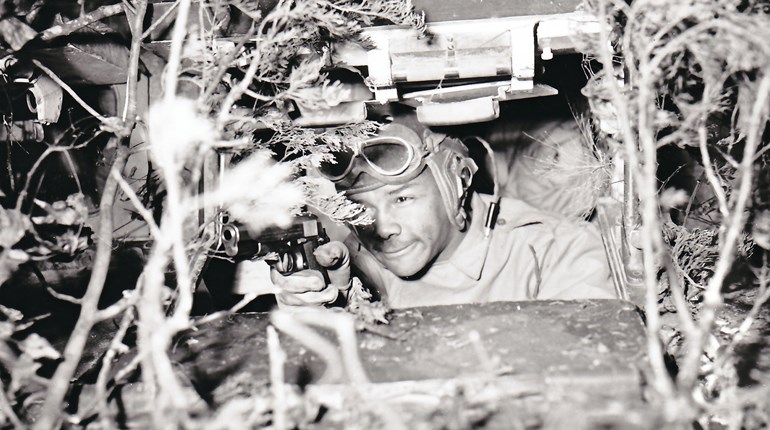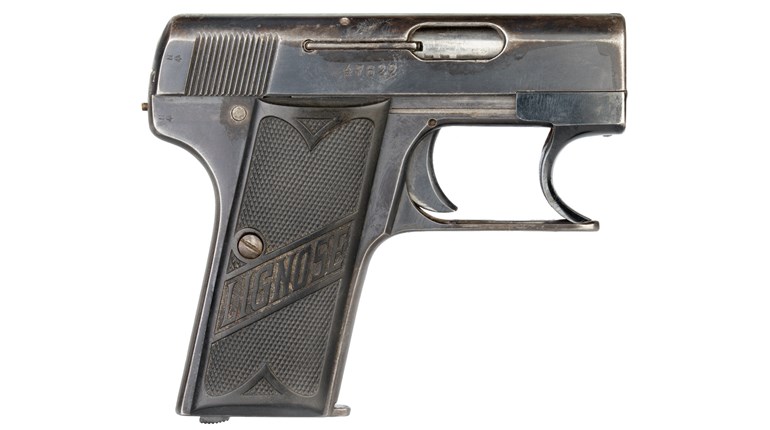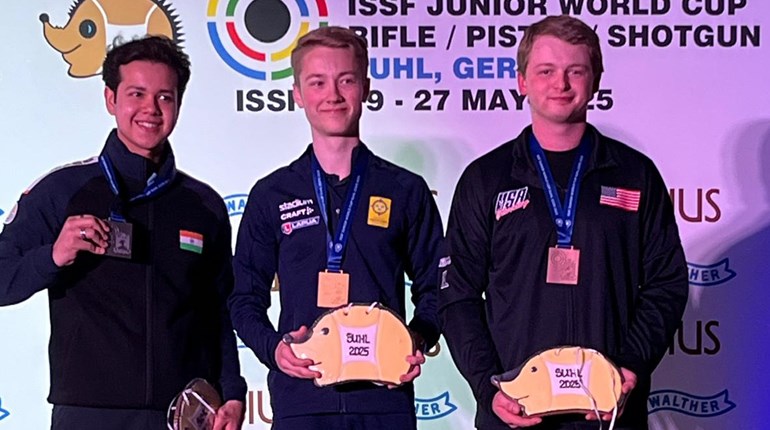
When we think of German infantry fighting forces in combat during the Second World War, we typically picture them armed with three specific guns: the Kar98k bolt-action rifle, the MP40 submachine gun and what many people consider the best belt-fed machine gun of the war: the fearsome MG42. While the armed forces of the Third Reich fought the conflict with a broad variety of other firearms, those three specific guns are what most people associate with Germany’s ground troops in combat.
Of the big three though, there is a mystique associated with the MG42 like no other. It is respected as an achievement of small-arms design and a paragon of infantry firepower. To this day it has a unique reputation as being a fire-breathing dragon of the battlefield—despite the fact that Germany used many other highly successful belt-fed machine guns between the years 1939 and 1945.

So what made the MG42 such a benchmark for effectiveness, and what gave it such a fearsome reputation? Several aspects of its design made it technically innovative, namely the extensive use of sheet-metal stampings in its construction. This characteristic alone made the MG42 a more economically practical design and therefore a good fit for the mass-production needs of a nation heavily engaged in fighting a multi-front war.
In addition to that, it was developed as an Einheitsmaschinengewehr (universal machine gun) that could be fired either from a bipod against targets at close range or from the Lafette 42 tripod-mounting system against targets at greater distances. That made it a system that could either advance with an attacking echelon or lay down fire in support of an infantry assault. Since it could also be mounted on vehicles, the MG42 provided versatile firepower to suit just about any tactical situation.
Another feature making it a potent battlefield tool was the gun’s quick-change barrel. In seconds, the operator could exchange a hot barrel for a cool one, which made it possible for an air-cooled machine gun to lay down a sustained volume of fire. Thus, the MG42 could remain lightweight enough to be moved around on the battlefield while still being capable of putting enough fire on a target to matter.

While these features made it economically practical and combat effective, they did not contribute to the mystique that elevated the MG42 above just about every other machine gun that fought in World War II in terms of reputation. The quick-change barrel feature was a critical part of the gun’s design because of the dangers associated with overheating, and overheating was a concern with the MG42 because of its high cyclic rate of fire—an average of 1,200 rounds per minute (RPM).
The fact that the German military equipped its fighting forces with a standard-issue, individually portable belt-fed machine gun that could rip through belts of 7.92x57 mm ammunition at such a rate was unique by World War II standards. While other machine guns in common use at the time could produce comparably high cyclic rates of fire, they were for the most part aircraft-mounted guns not intended for ground use.
This alone is why the MG42 earned its fearsome reputation—so fearsome in fact that in 1945, the U.S. Army Signal Corps Pictorial Service produced Film Bulletin No. 181 titled “Automatic Weapons—American vs. German.” This 10-minute film compared the submachine guns and machine guns being used by the opposing sides and specifically attempted to downplay the MG42’s intimidating cyclic rate of fire by declaring that its “bark is worse than its bite.”
The MG42’s rapid “bark” may have earned its notoriety, but it was the gun’s operating system that made it possible. Thanks to an innovative recoil-operated roller-locking mechanism, it could move through an operating cycle at a higher rate than its predecessor, the MG34.
Today, we remember the MG42 primarily for that rate of fire, but we should probably remember it more for the legacy that it created. The roller-locking system was ultimately adapted for use in a magazine-fed rifle chambered in 7.92x33mm known as the Maschinenkarabiner Gerät 06, or StG45(M).
After the war, the Gerät 06 evolved into the Spanish CETME automatic rifle, which in turn evolved into the Heckler & Koch G3 weapons system, and even eventually the much-respected MP5 submachine gun. Despite its influence on spin-off designs that are still with us today, the MG42 itself has reached beyond the fall of the Third Reich in 1945 all the way to the present. Yugoslavia adopted it after the war as the M53 still in 7.92x57 mm Mauser. Then, in 1958, West Germany modified it to fire the 7.62 NATO cartridge and designated it MG3. That evolution of the MG42 differs only slightly from its 8 mm ancestor from almost 80 years ago and it serves the Federal Republic of Germany to this day.






































